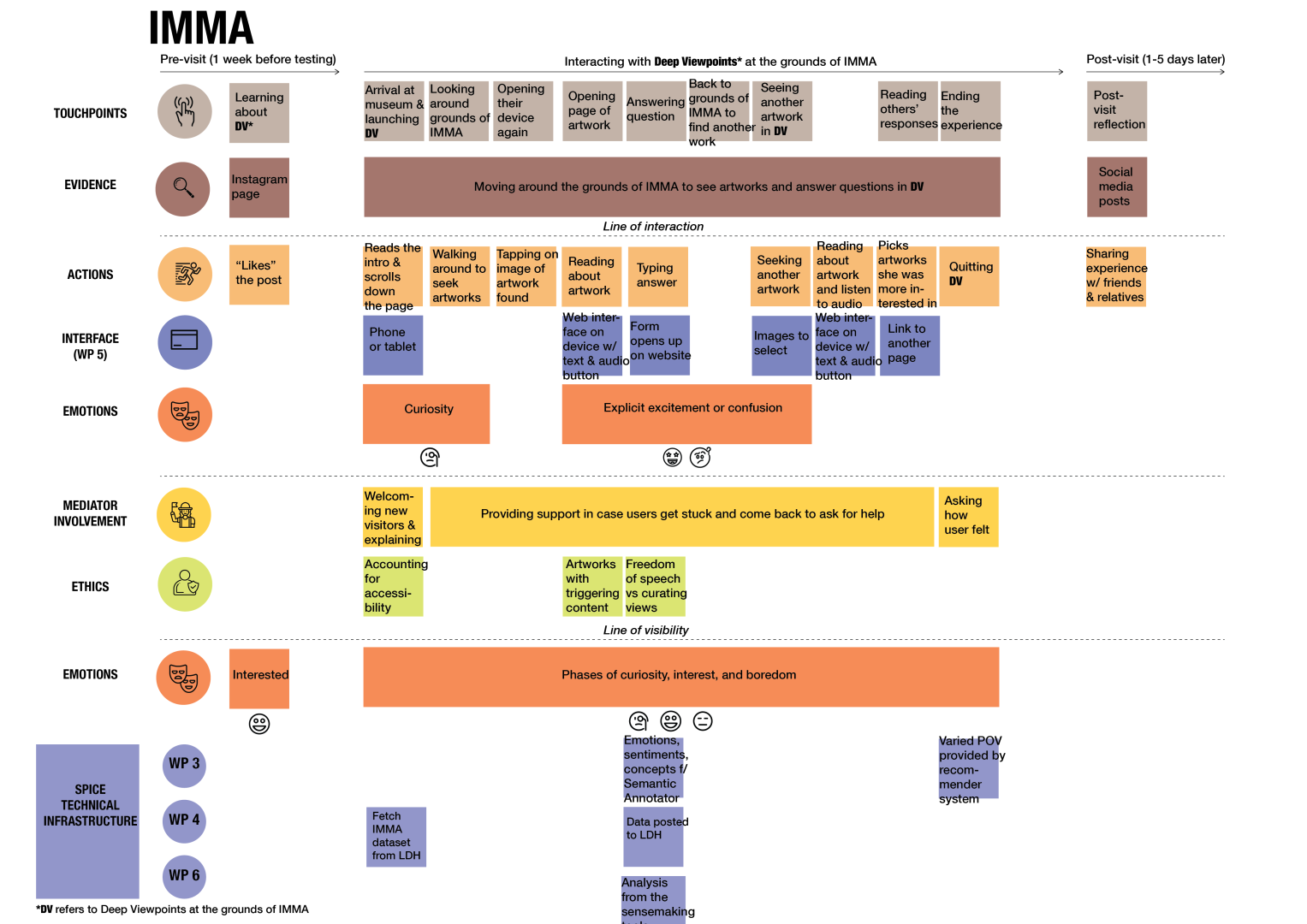
SPICE
Social cohesion, Participation, and Inclusion through Cultural EngagementCase study : Ireland
Support groups who are less able to visit the museum physically, such as asylum seekers and children with serious illnesses, to access collections and share their own perspectives. Make perspectives available online and in the museum. Encourage visitors to think about universal, personal themes such as family to make interconnections across groups.
Mary visits the art museum on her own. She is an engaged visitor, visiting the museum multiple times annually, often she plans to visit a particular exhibition via the museum’s website, but then spontaneously explores other exhibitions and experiences at the museum when she happens to be physically on-site. As she passes through the reception area, a member of the museum’s visitor experience team invites Mary to interact with the digital system set up in the museum’s dedicated Response Room. The Response Room is equipped with touch screens and display technology. This digital system helps Mary to choose artefacts within the museum collection which relate to a theme that interests her: “family”. The system allows her to tag the virtual collection using themes and concepts which she thinks will be helpful in exploring the theme and she shares it with other users. While Mary identifies relevant artefacts that she is interested in, the system also provides her with examples of artefacts that other visitors have identified around this theme. Some of the other visitors’ selections complement Mary’s interests, but some contrast with and challenge Mary’s feelings about the theme. She uses insights gained from thinking about these contrasting responses to edit her selection and to add new artefacts to her collection.
The system is available to other users through different types of external organisations which partner with the museum’s engagement and learning programme. For example:
- HEED Poster Project. This project concerns discrimination and inequality in Dublin City, including Direct Provision, the homeless emergency, and disability. Posters are created through conversations with individuals and groups highlighting issues of discrimination such as disabled access to transport.
- Glucksman gallery, Cork. Working with children living in Direct Provision to work with artists to develop innovative installations from recyclables and natural materials.
- Helium Arts. Bringing culture to children who due to illness are not able to attend the museum. Helium Arts collaborates with children and young people living with illness in community settings across the country, using filmmaking, music, artmaking, puppetry.
- Crocosmia × is a collaborative art project with asylum seekers living in Ireland that brings art, poetry and horticulture together in workshops leading up to site-specific public artworks in IMMA.
Mark is an educational officer with the museum and knows from the system that there is a second level school class arriving this afternoon. He sees that the class has requested to tour an exhibition in which one of the artworks addresses the theme of “family”. The class is visiting purely to gain information related to a question that may be asked in their state art examination later that term. When the tour finishes, Mark invites the class to visit the Response Room. There the students along with their teacher Karen, use the system to explore the theme of “family”. Mark shows the class how they can use the touch interfaces in the room or to use the system with their own devices. They can also see museum artefacts that are not currently on physical display or on-site but relate to the theme “family”. They can engage with both Mary’s input and, also, the tags created by participants from the Crocosmia × project with asylum seekers. Karen connects to the system later on with her mobile device and begins to use it to explore some artefacts which do not conform to her own sense of “family”. She is particularly affected by seeing one of the other participant’s selections and she shares this with her class back in the school context.
